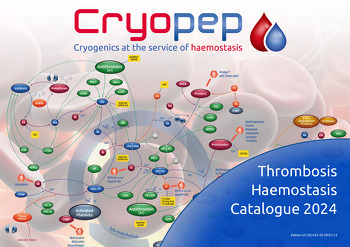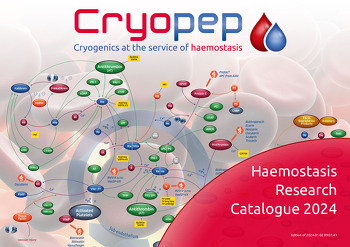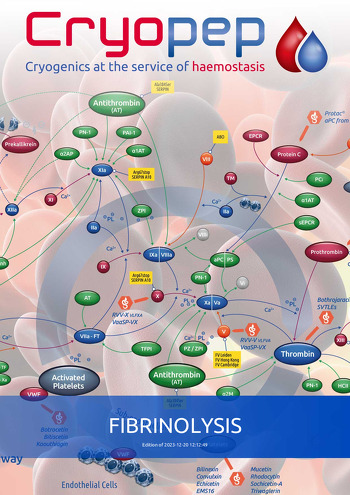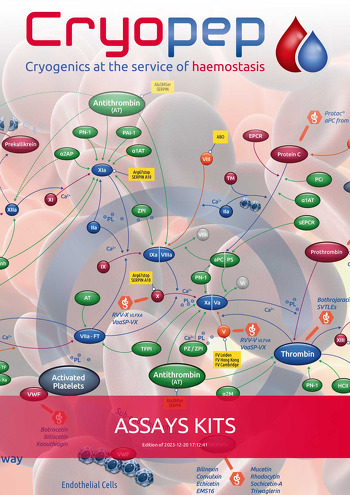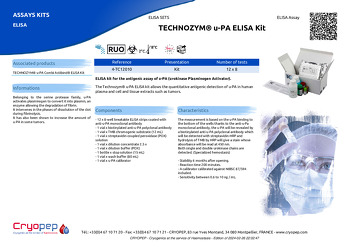HEMOSTASIS COAGULATION ROUTINE FIBRINOLYSIS UROKINASE PLASMINOGEN ACTIVATOR
HEMOSTASIS COAGULATION RESEARCH ASSAYS KITS ELISA
TECHNOZYM® u-PA ELISA Kit






ELISA Assay
ELISA kit for the antigenic assay of u-PA (urokinase Plasminogen Activator).
The Technozym® u-PA ELISA kit allows the quantitative antigenic detection of u-PA in human plasma and cell and tissue extracts such as tumors.
Access on the manufacturer's website TECHNOCLONE
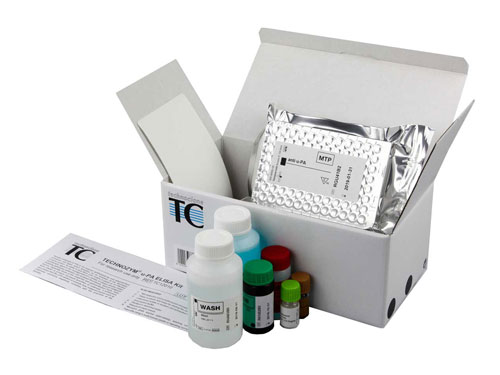
| Reference | 4-TC12010 |
|---|---|
| Presentation | Kit |
| Number of assays | 12 x 8 |
| Quote |
Price list, safety data sheets and notices are accessible to our registered customers.
| Reference | Presentation | Number of assays | Quote | Product sheet |
|---|---|---|---|---|
| 4-TC12010 | Kit | 12 x 8 |












